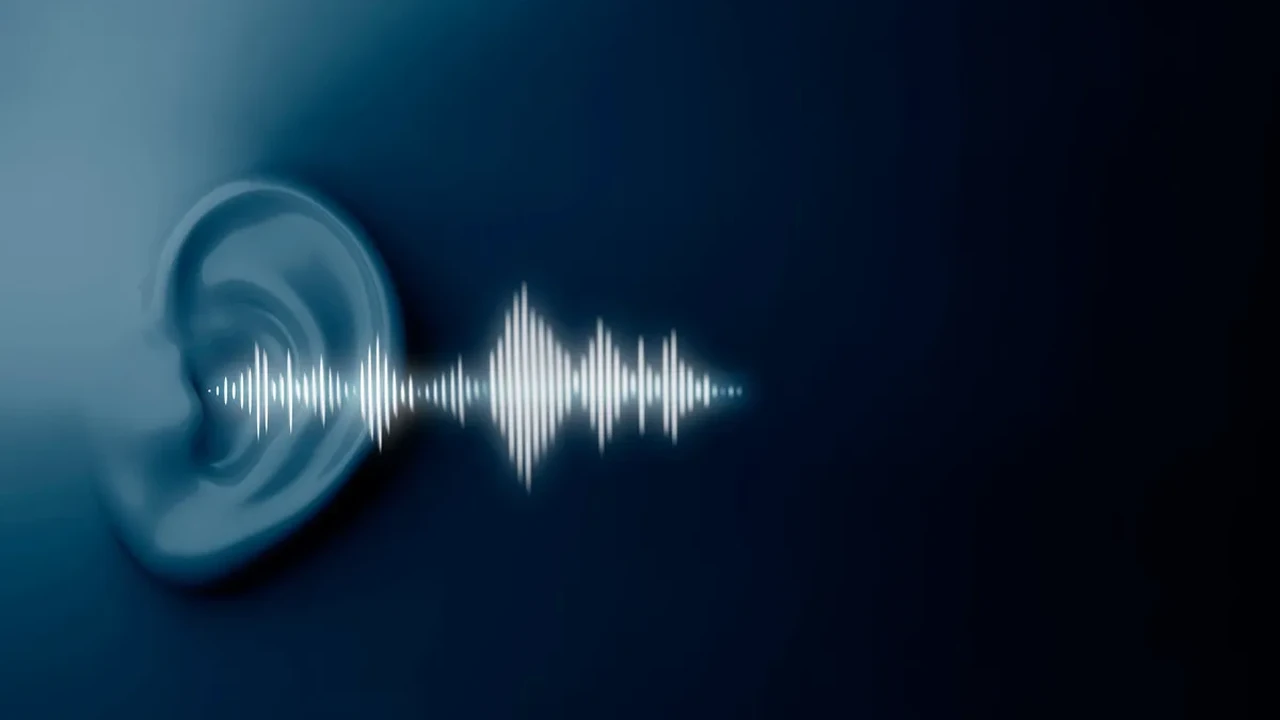Choosing the Right Hearing Aid For You
Navigate the process of selecting a hearing aid. Consider factors like hearing loss type, lifestyle, budget, and features to find your perfect match.

Choosing the Right Hearing Aid For You A Comprehensive Guide
So, you've decided it's time to explore hearing aids. Maybe you've noticed you're constantly asking people to repeat themselves, or perhaps your loved ones have pointed out that the TV volume is a little too high. Whatever the reason, taking this step is a fantastic move towards improving your quality of life. But with so many options out there, how do you even begin to choose the right hearing aid for you? It can feel overwhelming, like trying to pick a needle out of a haystack, especially when you're new to all the terminology and technology. Don't worry, we're here to break it all down in a friendly, easy-to-understand way. We'll walk you through the key factors to consider, from understanding your specific hearing loss to matching a device with your lifestyle and budget. We'll even dive into some popular models and their features to give you a head start. Let's get started on your journey to better hearing!
Understanding Your Hearing Loss The First Step to Better Hearing
Before you even start looking at different hearing aid models, the absolute first and most crucial step is to understand your specific type and degree of hearing loss. This isn't something you can guess at; it requires a professional diagnosis from an audiologist. They'll perform a comprehensive hearing test, which usually includes an audiogram, to map out your hearing abilities across different frequencies. This information is vital because different hearing aids are designed to address different types and severities of hearing loss.
Types of Hearing Loss Explained
- Sensorineural Hearing Loss: This is the most common type, often referred to as 'nerve deafness.' It occurs when there's damage to the inner ear (cochlea) or the auditory nerve. It can be caused by aging, noise exposure, genetics, or certain medical conditions. Most hearing aids are designed to help with sensorineural hearing loss.
- Conductive Hearing Loss: This type happens when sound waves can't reach the inner ear effectively. It might be due to blockages like earwax, fluid in the middle ear, a punctured eardrum, or problems with the tiny bones in the middle ear. Sometimes, conductive hearing loss can be medically or surgically treated, but hearing aids can also be very effective.
- Mixed Hearing Loss: As the name suggests, this is a combination of both sensorineural and conductive hearing loss.
Degrees of Hearing Loss What Your Audiogram Reveals
Your audiogram will show the degree of your hearing loss, typically categorized as:
- Mild Hearing Loss: You might struggle with soft speech or conversations in noisy environments.
- Moderate Hearing Loss: You'll likely have difficulty understanding normal speech, even in quiet settings, and often need the TV or radio louder.
- Severe Hearing Loss: Most conversations are very difficult to follow without amplification, and you might miss many environmental sounds.
- Profound Hearing Loss: You can only hear very loud sounds, if any, and rely heavily on visual cues or other communication methods.
Knowing your specific hearing loss profile will guide your audiologist in recommending the most appropriate hearing aid technology and power levels. For instance, someone with mild hearing loss might do well with a discreet, lower-power device, while someone with severe loss will need a more powerful hearing aid, possibly a BTE (Behind-The-Ear) model, to provide sufficient amplification.
Considering Your Lifestyle and Daily Activities Matching Hearing Aids to Your World
Your lifestyle plays a huge role in determining which hearing aid style and features will suit you best. Are you an active person who loves sports and the outdoors? Do you spend most of your time in quiet environments, or are you frequently in noisy social gatherings or professional meetings? Thinking about your daily routine will help narrow down the options.
Active Lifestyles and Outdoor Enthusiasts
If you're constantly on the go, exercising, or spending time outdoors, you'll want hearing aids that are durable, sweat-resistant, and secure. Look for features like:
- Water and Dust Resistance (IP Rating): An IP rating of IP68 means the device is highly resistant to both water and dust, perfect for active users.
- Secure Fit: BTE or RIC (Receiver-In-Canal) styles with custom earmolds or sport locks can offer a more secure fit during physical activity.
- Wind Noise Reduction: Essential for outdoor activities like hiking or cycling.
Social Butterflies and Professionals
For those who frequently attend social events, business meetings, or work in dynamic environments, speech clarity in noise is paramount. Consider features such as:
- Advanced Noise Reduction: Helps filter out background chatter and focus on speech.
- Directional Microphones: Automatically adjust to focus on sounds coming from the front, improving speech understanding in noisy places.
- Bluetooth Connectivity: For seamless streaming of phone calls, music, and presentations directly to your hearing aids.
- Multiple Programs: Allows you to switch between settings optimized for different listening environments (e.g., restaurant, concert, quiet conversation).
Quiet Homebodies and Casual Users
If your daily life is mostly spent in quieter environments, perhaps reading, watching TV, or having one-on-one conversations, you might not need all the advanced features. Simpler, more discreet models could be a great fit. Key considerations might include:
- Comfort: Smaller, custom-fit ITE (In-The-Ear) or CIC (Completely-In-Canal) models might be preferred for all-day comfort.
- Ease of Use: Simple controls, automatic settings, or rechargeable options can be very convenient.
- TV Streamers: A dedicated accessory that sends TV audio directly to your hearing aids for clear sound without disturbing others.
Exploring Hearing Aid Styles and Their Features Finding Your Perfect Match
Hearing aids come in various styles, each with its own advantages and disadvantages in terms of size, power, features, and discretion. Let's break down the most common types:
Behind-The-Ear BTE Hearing Aids
BTE hearing aids sit behind the ear and connect to a custom earmold or a thin tube that goes into the ear canal. They are generally the largest style but also the most powerful and durable.
- Pros: Suitable for all degrees of hearing loss, robust, longer battery life, easier to handle for those with dexterity issues, often have more features and controls, less prone to moisture damage in the ear canal.
- Cons: Most visible style, can be less comfortable with glasses.
- Ideal for: Severe to profound hearing loss, children, individuals with dexterity challenges, active users needing durability.
Receiver-In-Canal RIC or Receiver-In-The-Ear RITE Hearing Aids
RIC/RITE hearing aids are similar to BTEs, but the speaker (receiver) is placed directly in the ear canal, connected by a thin wire to the main unit behind the ear. This makes them smaller and often more discreet than traditional BTEs.
- Pros: Very popular, discreet, comfortable, natural sound quality (due to receiver placement), suitable for mild to severe hearing loss, often rechargeable.
- Cons: Receiver in the ear can be more susceptible to earwax and moisture damage, slightly less powerful than traditional BTEs.
- Ideal for: Mild to severe hearing loss, those seeking discretion and natural sound, active individuals.
In-The-Ear ITE Hearing Aids
ITE hearing aids are custom-made to fit directly into the outer ear bowl. They are larger than canal styles but still contained within the ear.
- Pros: Custom fit for comfort, easier to handle than smaller canal aids, can accommodate more features and a larger battery than CIC/IIC, suitable for mild to severe hearing loss.
- Cons: More visible than canal styles, can pick up wind noise, susceptible to earwax buildup.
- Ideal for: Mild to severe hearing loss, those who prefer an in-ear device but need more power or features than smaller models.
In-The-Canal ITC Hearing Aids
ITC hearing aids are custom-made and fit partially into the ear canal, making them less visible than ITEs.
- Pros: More discreet than ITEs, custom fit, relatively easy to handle, suitable for mild to moderately severe hearing loss.
- Cons: Smaller battery than ITEs, fewer features than BTE/RIC, susceptible to earwax.
- Ideal for: Mild to moderately severe hearing loss, those seeking a balance between discretion and functionality.
Completely-In-Canal CIC Hearing Aids
CIC hearing aids are custom-made and fit entirely within the ear canal, making them almost invisible.
- Pros: Highly discreet, custom fit, natural sound quality (due to deep placement).
- Cons: Smallest battery (shorter battery life), limited features and controls, can be difficult to handle for those with dexterity issues, susceptible to earwax and moisture.
- Ideal for: Mild to moderate hearing loss, those prioritizing maximum discretion.
Invisible-In-Canal IIC Hearing Aids
IIC hearing aids are the smallest and most discreet style, fitting even deeper into the ear canal than CICs, making them virtually invisible.
- Pros: Virtually invisible, custom fit, natural sound quality.
- Cons: Very small battery (shortest battery life), very limited features and controls, difficult to handle, susceptible to earwax and moisture.
- Ideal for: Mild to moderate hearing loss, those who demand ultimate discretion and have good dexterity.
Budget and Pricing Understanding Hearing Aid Costs and Value
Hearing aids are a significant investment, and their cost can vary widely, typically ranging from $1,000 to $6,000 per device, or even more for the most advanced models. It's important to understand what contributes to this cost and how to budget effectively.
Factors Influencing Hearing Aid Price
- Technology Level: This is the biggest factor. Basic models offer essential amplification, while advanced and premium models include sophisticated features like AI-driven noise reduction, speech enhancement, Bluetooth connectivity, and personalized soundscapes.
- Style: Generally, smaller, more discreet custom-fit models (like CIC or IIC) can sometimes be more expensive due to the custom manufacturing process, though RICs often fall into the premium category due to their advanced features.
- Professional Services: The price often includes the audiologist's fees for initial consultation, fitting, programming, follow-up adjustments, and ongoing support. These services are crucial for optimal performance.
- Brand: Established brands with extensive research and development often have higher price points.
- Warranty and Aftercare: Comprehensive warranties and included aftercare packages can add to the initial cost but provide peace of mind.
Budgeting and Financing Options for Hearing Aids
- Insurance Coverage: Check with your health insurance provider. While many plans don't cover the full cost, some offer partial coverage or discounts. Medicare generally doesn't cover hearing aids, but some Medicare Advantage plans do.
- Financing Plans: Many audiology clinics offer payment plans or work with third-party financing companies to spread the cost over time.
- Government Programs: Veterans Affairs (VA) provides comprehensive hearing care for eligible veterans. Some state programs or non-profits may also offer assistance.
- Over-The-Counter (OTC) Hearing Aids: For adults with perceived mild to moderate hearing loss, OTC hearing aids are a newer, more affordable option. They are available without a prescription or professional fitting, but it's still wise to get a hearing check first.
Key Features to Look For Enhancing Your Hearing Experience
Modern hearing aids are packed with incredible technology designed to make your listening experience as natural and effortless as possible. Here are some key features to consider:
- Noise Reduction: This feature helps filter out unwanted background noise, making it easier to focus on speech in challenging environments. Advanced systems can differentiate between speech and noise.
- Directional Microphones: These automatically adjust to focus on sounds coming from the front, improving speech understanding in noisy situations.
- Feedback Cancellation: Eliminates the annoying whistling sound (feedback) that can occur when sound leaks out of the ear and is re-amplified.
- Bluetooth Connectivity: Allows you to wirelessly stream audio from your smartphone, TV, computer, or other Bluetooth-enabled devices directly to your hearing aids. This is fantastic for phone calls, music, and TV watching.
- Rechargeable Batteries: Many modern hearing aids come with rechargeable options, eliminating the need to constantly change tiny batteries. Simply place them in a charging case overnight.
- Telecoil (T-coil): A small coil that picks up electromagnetic signals from compatible loop systems (found in some public venues like theaters or places of worship) and landline telephones, sending the sound directly to your hearing aids.
- Tinnitus Masking: Some hearing aids include features that generate soothing sounds to help alleviate the perception of tinnitus (ringing in the ears).
- Artificial Intelligence (AI) and Machine Learning: Premium hearing aids use AI to learn your preferences and automatically adjust settings based on your environment, providing a more personalized listening experience.
- Smartphone Apps: Many hearing aids come with companion apps that allow you to control volume, switch programs, check battery life, and even personalize sound settings from your phone.
- Remote Adjustments: Some audiologists can make fine-tuning adjustments to your hearing aids remotely via an app, saving you a trip to the clinic.
Popular Hearing Aid Models and Their Applications A Comparative Look
To give you a better idea of what's out there, let's look at a few popular models from leading brands and discuss their typical applications and price ranges. Keep in mind that specific models and features evolve rapidly, and prices are estimates and can vary significantly based on the provider, technology level, and included services.
1. Phonak Audéo Lumity L90-R (Premium RIC)
- Description: This is a top-tier Receiver-In-Canal (RIC) hearing aid known for its exceptional speech understanding in noisy environments and advanced connectivity. It leverages Phonak's SmartSpeech™ Technology.
- Key Features: StereoZoom 2.0 for focused listening, SpeechSensor for 360-degree speech detection, universal Bluetooth connectivity (connects to iOS, Android, and other Bluetooth devices), tap control, rechargeable battery, and a robust IP68 rating.
- Ideal for: Individuals with mild to severe hearing loss who have active social lives, frequently attend meetings, or work in dynamic environments. Excellent for those who prioritize speech clarity and seamless connectivity.
- Estimated Price Range: $3,000 - $6,000+ per device (depending on technology level and services).
- Use Case Example: A professional who needs to clearly understand colleagues in a bustling office, participate in video calls, and enjoy music streaming during commutes.
2. Oticon More 1 miniRITE R (Premium RIC)
- Description: Oticon More is designed to give your brain more sound information, not less, using a Deep Neural Network (DNN) trained with millions of real-life sound scenes. It aims to provide a more natural and complete soundscape.
- Key Features: MoreSound Intelligence™ 2.0 with DNN, MoreSound Amplifier™ 2.0, MoreSound Optimizer™ for feedback prevention, direct streaming from iPhone and select Android devices, rechargeable battery, and a discreet miniRITE style.
- Ideal for: Users with mild to severe hearing loss who desire a rich, natural sound experience and want to hear all the sounds around them without feeling overwhelmed. Great for those who appreciate advanced sound processing.
- Estimated Price Range: $2,800 - $5,800+ per device.
- Use Case Example: Someone who enjoys attending concerts, dining in restaurants, and engaging in group conversations, wanting to experience the full richness of their environment.
3. ReSound ONE 9 (Premium RIC)
- Description: The ReSound ONE introduces the M&RIE (Microphone & Receiver-In-Ear) design, placing a third microphone directly in the ear canal, leveraging the natural shape of your ear to collect sound. This aims for a more natural sound localization and personalized hearing experience.
- Key Features: M&RIE for natural sound, Ultra Focus for one-on-one conversations in noise, All Access Directionality, direct streaming from iOS and Android, rechargeable options, and a comprehensive smartphone app for personalization.
- Ideal for: Individuals with mild to severe hearing loss who prioritize natural sound quality, spatial awareness, and excellent performance in noisy environments. Particularly good for those who struggle with localizing sounds.
- Estimated Price Range: $2,700 - $5,500+ per device.
- Use Case Example: An individual who enjoys outdoor activities like birdwatching or hiking, where natural sound perception and directionality are important, as well as someone who frequently navigates busy urban environments.
4. Starkey Genesis AI (Premium RIC/BTE/ITE/ITC/CIC)
- Description: Starkey Genesis AI is a comprehensive line of hearing aids that focuses heavily on artificial intelligence for superior sound processing, health tracking, and personalized features. It's available in various styles.
- Key Features: Edge Mode+ for on-demand sound optimization, Health Tracking (steps, engagement), Fall Detection, Thrive Assistant for personalized support, two-way audio streaming, and a long-lasting rechargeable battery.
- Ideal for: Users with mild to profound hearing loss who are tech-savvy and interested in health and wellness features beyond just hearing. Great for those who want a highly personalized and intelligent hearing experience.
- Estimated Price Range: $2,900 - $6,000+ per device.
- Use Case Example: An older adult who wants not only excellent hearing but also the added peace of mind of fall detection and activity tracking, or a younger user who appreciates the AI-driven personalization and smartphone integration.
5. Widex Moment Sheer 440 (Premium RIC)
- Description: Widex Moment Sheer focuses on delivering the most natural sound possible with its ZeroDelay™ technology, which virtually eliminates processing delay, making sound feel more immediate and less artificial.
- Key Features: PureSound™ with ZeroDelay, SoundSense Learn for personalized sound, Widex My Sound™ for AI-driven adjustments, direct streaming from iOS and Android, rechargeable options, and a sleek, discreet design.
- Ideal for: Individuals with mild to severe hearing loss who are sensitive to the 'processed' sound often associated with hearing aids and desire the most natural, uncolored sound experience.
- Estimated Price Range: $2,600 - $5,400+ per device.
- Use Case Example: A musician or music lover who wants to enjoy music with exceptional clarity and naturalness, or anyone who finds traditional hearing aid sound quality to be artificial.
6. Jabra Enhance Select 500 (OTC RIC)
- Description: This is an Over-The-Counter (OTC) hearing aid designed for adults with perceived mild to moderate hearing loss. It offers a balance of advanced features and affordability, with optional professional support.
- Key Features: Advanced noise reduction, directional microphones, Bluetooth streaming, rechargeable battery, and a user-friendly app for self-fitting and adjustments. Optional access to remote audiology support.
- Ideal for: Adults with perceived mild to moderate hearing loss who are comfortable with technology and want a more affordable, convenient solution. Good for those who might not need extensive in-person professional services.
- Estimated Price Range: $1,000 - $2,000+ per pair (often sold as a pair).
- Use Case Example: Someone who notices difficulty hearing in noisy restaurants or understanding soft speech, but isn't ready for a full prescription hearing aid process, and is comfortable managing their device via a smartphone app.
The Importance of Professional Fitting and Aftercare Maximizing Your Investment
While the hearing aid itself is a piece of technology, its effectiveness largely depends on the expertise of the professional who fits and programs it. This is where an audiologist or hearing aid specialist comes in. They don't just hand you a device; they tailor it to your unique hearing profile and needs.
What to Expect from a Professional Fitting
- Real Ear Measurement (REM): This crucial step involves placing a tiny microphone in your ear canal to measure the actual sound levels produced by the hearing aid at your eardrum. This ensures the device is providing the correct amplification for your specific hearing loss.
- Personalized Programming: Your audiologist will program the hearing aids based on your audiogram and your lifestyle needs, adjusting settings for different environments.
- Counseling and Training: You'll receive instructions on how to insert and remove your hearing aids, clean them, change batteries (if applicable), and use any special features or apps.
- Trial Period: Most reputable clinics offer a trial period (often 30-60 days) during which you can test the hearing aids in your daily life and return them if they don't meet your needs. This is incredibly important.
Ongoing Aftercare and Support
Your journey with hearing aids doesn't end after the initial fitting. Regular follow-up appointments are essential for:
- Fine-Tuning Adjustments: As you adapt to your hearing aids, you might notice certain sounds are too loud or too soft, or you struggle in specific environments. Your audiologist can make precise adjustments.
- Cleaning and Maintenance: Professionals can perform deep cleaning and minor repairs, ensuring your devices remain in optimal condition.
- Hearing Re-evaluations: Your hearing can change over time, and your audiologist will monitor this and adjust your hearing aids accordingly.
- New Technology Updates: They can inform you about software updates or new accessories that could enhance your experience.
Choosing the right hearing aid is a personal journey, and it's okay to take your time. By understanding your hearing loss, considering your lifestyle, exploring the different styles and features, and working closely with a qualified audiologist, you'll be well on your way to finding the perfect match that brings the world of sound back into focus for you. Don't hesitate to ask questions, try different options during your trial period, and advocate for your hearing health. Your ears will thank you!
:max_bytes(150000):strip_icc()/277019-baked-pork-chops-with-cream-of-mushroom-soup-DDMFS-beauty-4x3-BG-7505-5762b731cf30447d9cbbbbbf387beafa.jpg)






